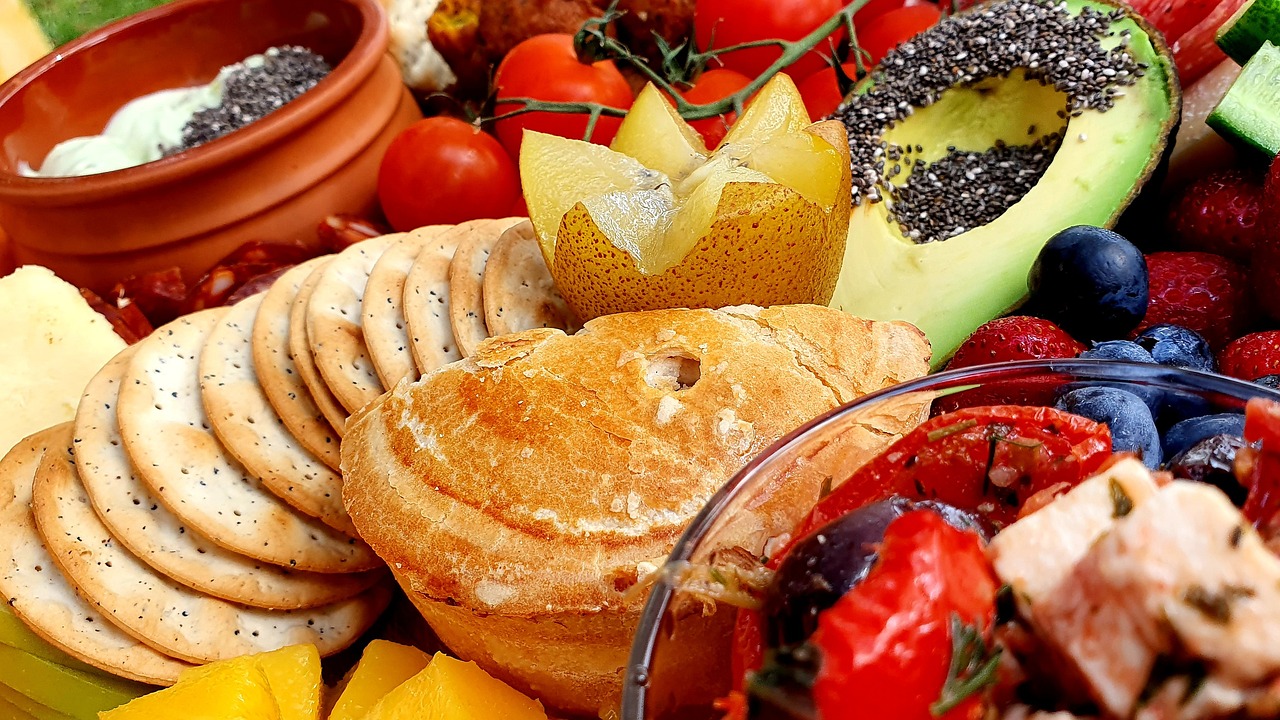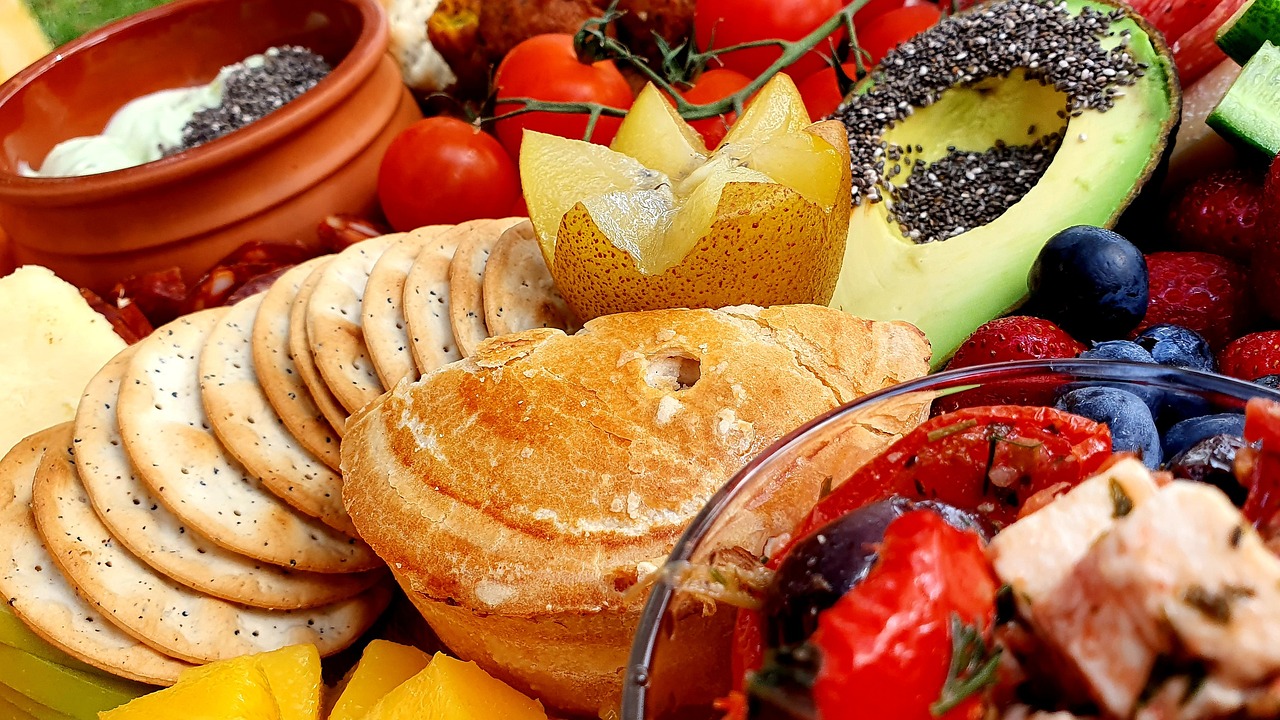Antipasto Platter: A Taste of Italy's Finest

When diving into the world of Italian antipasto platters, one can expect a tantalizing journey through a variety of flavors and textures that truly encapsulate the essence of Italian cuisine. Imagine a vibrant spread of cured meats, cheeses, olives, and more, all coming together to create a symphony of taste on a single platter.
Picture yourself embarking on a culinary adventure that takes your taste buds on a rollercoaster ride of savory delights. From the salty richness of prosciutto to the bold flavors of aged cheeses, each bite tells a story of tradition and craftsmanship passed down through generations.
- Explore the rich tapestry of flavors that make up an antipasto platter, each ingredient carefully selected to complement the others and create a harmonious blend of tastes.
- Experience the artistry of Italian culinary culture as you indulge in a feast for the senses, where every bite is a celebration of the country's gastronomic heritage.
- Let the vibrant colors and enticing aromas of the antipasto platter transport you to the sun-drenched hills of Tuscany, where food is not just sustenance but a way of life.
History of Antipasto
Antipasto, a beloved tradition in Italian cuisine, has a rich history that dates back centuries. Originating from the Latin phrase "anti" meaning "before" and "pastus" meaning "meal," antipasto was traditionally served before the main course to stimulate the appetite and set the stage for a delightful dining experience. Initially consisting of simple offerings such as olives, anchovies, and pickled vegetables, antipasto has evolved over time into a diverse and elaborate spread of flavors and textures.
The concept of antipasto can be traced back to ancient Rome, where it was customary to start a meal with small bites of savory foods to awaken the taste buds. As Italian cuisine developed and regional variations emerged, antipasto became a staple in the gastronomic culture of Italy, reflecting the country's dedication to quality ingredients and culinary creativity.
Throughout history, antipasto has been influenced by various cultures and culinary traditions, resulting in a fusion of flavors and ingredients that continue to captivate food enthusiasts worldwide. From the Mediterranean influences of Greece and Spain to the exotic spices of the Middle East, antipasto has absorbed a myriad of influences while maintaining its essence as a quintessential Italian dish.
Today, antipasto remains a cherished part of Italian dining, celebrated for its ability to bring people together and create a sense of conviviality around the table. Whether enjoyed as a prelude to a formal meal or as a standalone offering at social gatherings, antipasto embodies the spirit of sharing and indulgence that defines the Italian approach to food and hospitality.
Key Components
When it comes to creating a classic antipasto platter, it's essential to pay attention to the key components that define this traditional Italian dish. Each element plays a crucial role in delivering a harmonious blend of flavors and textures that tantalize the taste buds. Let's delve into the key components that make up a delicious antipasto platter:
- Prosciutto: This thinly sliced, dry-cured ham is a star player on any antipasto platter, offering a delicate and savory flavor profile that pairs well with various cheeses and fruits.
- Salami: Another staple cured meat, salami adds a robust and spicy kick to the platter, providing a contrast to milder flavors and textures.
- Cheeses: A variety of cheeses, such as Parmigiano-Reggiano, Pecorino, and Mozzarella, bring richness and depth to the platter, offering a range of tastes from sharp and tangy to creamy and mild.
- Marinated Vegetables: Artichokes, roasted peppers, olives, and pickled onions are popular choices for adding a burst of tangy and zesty flavors to the platter, balancing out the richness of the meats and cheeses.
- Crusty Bread: Slices of crusty Italian bread or grissini (breadsticks) serve as the perfect vehicle for enjoying the various components of the antipasto platter, adding a satisfying crunch and texture to each bite.
Combining these key components in thoughtful arrangements on a platter not only creates a visually appealing spread but also ensures a delightful culinary experience that captures the essence of Italian cuisine. The interplay of flavors, textures, and colors is what makes an antipasto platter a true celebration of Italy's finest ingredients.
Pairing and Presentation
When it comes to creating an enticing antipasto platter, pairing and presentation are key elements that can elevate the experience from ordinary to extraordinary. The art of combining different flavors, textures, and colors on a single platter can truly tantalize the taste buds and impress your guests. So, how can you master the art of pairing and presenting an antipasto platter that wows everyone at the table?
First and foremost, consider the balance of flavors. A well-rounded antipasto platter should offer a variety of tastes, from salty and savory to sweet and tangy. Pairing salty cured meats like prosciutto with creamy cheeses such as mozzarella or sharp Parmesan can create a harmonious contrast that delights the palate. Additionally, incorporating marinated vegetables like artichokes or roasted peppers can add a burst of acidity and freshness to the platter.
Another important aspect to consider is the texture of the ingredients. Combining crunchy elements like breadsticks or toasted nuts with softer components like ripe figs or soft cheeses can create a delightful textural contrast that keeps each bite interesting. Consider including a variety of textures to keep your guests engaged and eager to try each component.
When it comes to presentation, the visual appeal of an antipasto platter is just as important as the flavors it offers. Arrange the different elements in an aesthetically pleasing manner, making sure to create a balanced composition that is visually appealing. Use a mix of colors and shapes to create an eye-catching display that entices diners to dig in.
Consider using a wooden cutting board or a rustic platter as the base for your antipasto spread, adding a touch of authenticity to the presentation. Garnish with fresh herbs like basil or rosemary for a pop of color and added fragrance. Don't be afraid to get creative with the arrangement, playing with heights and angles to create visual interest.
Lastly, don't forget about the serving utensils. Provide small tongs or picks for guests to easily grab their favorite bites without making a mess. Consider including small bowls for olives or dips to keep the platter organized and easy to navigate. A well-presented antipasto platter not only delights the taste buds but also adds a touch of elegance to any gathering.
Modern Twists
When it comes to modern twists on traditional antipasto platters, the possibilities are as vast as the Italian countryside. Picture this: a vibrant array of colorful ingredients bursting with flavors that surprise and delight your taste buds. Let's dive into some innovative ideas that will elevate your antipasto experience to a whole new level.
1. Fusion Flavors: Blend the best of both worlds by incorporating ingredients from different cuisines. Imagine a fusion of Italian prosciutto with Japanese wasabi for a unique and unforgettable flavor combination.
2. Miniature Masterpieces: Create individual mini antipasto servings in small jars or on skewers for a charming and visually appealing presentation. These bite-sized delights are perfect for parties and gatherings.
3. Deconstructed Delights: Break away from the traditional platter format and deconstruct the elements of antipasto into separate components. This allows your guests to mix and match flavors according to their preferences.
4. Global Influences: Take your taste buds on a world tour by incorporating international ingredients into your antipasto platter. From Mexican salsa to Indian chutneys, the possibilities are endless.
5. Interactive Experiences: Turn your antipasto platter into an interactive dining experience by setting up a DIY station where guests can build their own creations. This hands-on approach adds a fun and personalized touch to your meal.
6. Vegetarian Varieties: Explore the world of vegetarian antipasto options by including grilled vegetables, marinated tofu, and stuffed mushrooms. These plant-based alternatives offer a fresh and healthy twist on the traditional meat-centric platter.
7. Creative Condiments: Elevate your antipasto game with a selection of unique condiments such as truffle-infused honey, fig jam, or balsamic glaze. These flavorful additions will take your taste buds on a journey of culinary delight.
8. Artistic Arrangements: Treat your antipasto platter as a canvas and let your creativity shine through in the presentation. Play with colors, shapes, and textures to create a visually stunning masterpiece that is almost too beautiful to eat.
With these modern twists, you can transform a traditional antipasto platter into a culinary work of art that surprises, delights, and explodes with flavor. So, why not embark on a gastronomic adventure and explore the endless possibilities of reinventing this classic Italian dish?



 HazalVardal
HazalVardal 





